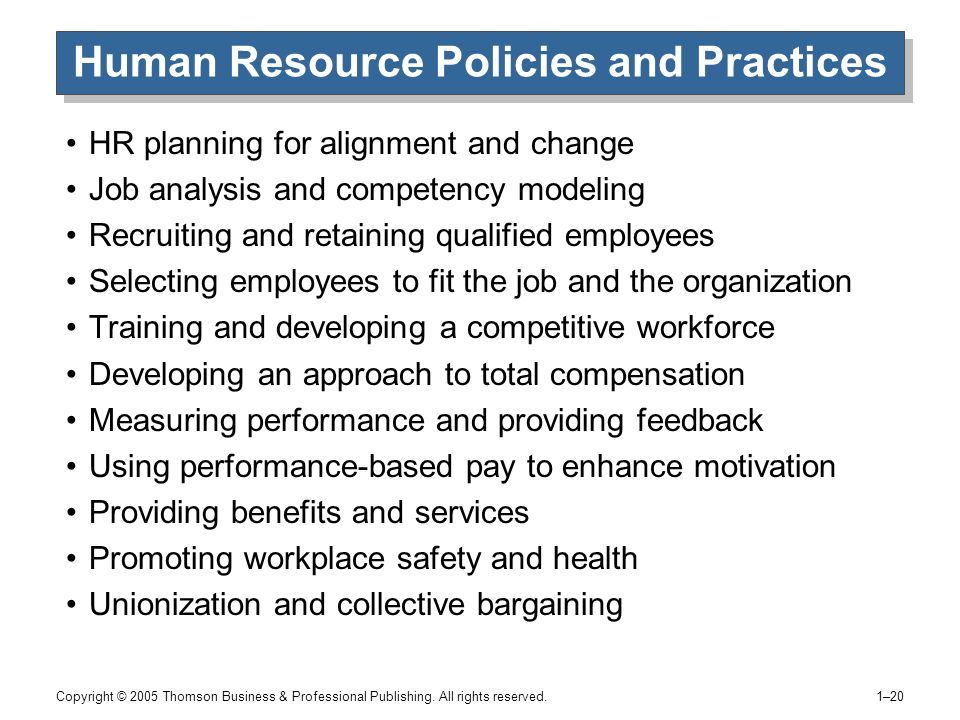10 Essential HR Policies and Procedures
If you are creating and scaling an organisation, clear guidelines and policies need to be included in your employee handbook. This is especially the case if you manage a startup or a small business, which most of the times is growing becoming a scale up or medium size business and needs to have official HR policies and procedures in order to create an internal structure.
In a smaller company or startup environment, having friendly and informal procedure makes a lot of sense. There are not a lot of people, a lot of things are not yet clarified and experimentations are essential part of the early days of the company.
But when a company starts getting a bit more serious, and starts hiring and growing, clear and transparent guidelines and procedures between the employer and the employees but also internally in the groups or teams are super important to help the team eliminate conflicts and misunderstandings. Incorporating cloud archiving solutions can also play a pivotal role in maintaining data integrity and accessibility during this growth phase.
What we typically see is that companies wait for issues to arise to formalise the internal policies and procedures. Companies need to set out clear ground rules for employees, protect the rights of the employer, and ensure that all the team members are on the same page, have clear goals and responsibilities.
So, let's dive deeper into the essential HR policies that need to be included in your employee handbook
What is an HR policy or procedure?
HR policies are (simply put) formal rules and guidelines that businesses create in order to manage their employees and the relationships between management, employees and any other external contractor working in the company.
On the other hand HR procedures, are step-by-step instructions that specify what actions should be taken to comply with these specific HR policies.
In general the role of the HR department or of the human resource management is to create a definition of these policies and procedures in order to ensure a streamlined and efficient collaborations between various departments and groups in the company
What should I document in an HR policy?
In an HR policy document, the HR department or the management covers a set of different aspects including (but not limited) to the following topics:
Recruitment policy
-
Who is responsible in the HR department for recruiting? -
What are the criteria need to be ensured before hiring someone? -
Which processes should be followed?
Dress code and rules
-
Is there any specific dress code? -
What is normal in the office/working hours? -
What is not allowed?
Overtime compensation
-
What happens if someone works additional hours? -
What is the compensation specified for those specific cases? -
How there hours should be registered by the employees?
Vacation and limitations
-
How many days per year of paid Vacation an employee can take? -
Are there any limitations in terms of timeframe, or high peak season?
Sick days and personal leave
-
How many days someone can take a sick leave without a doctor's confirmation -
Can someone take a sabbatical from work? How? When?
Performance evaluation (every quarter or year)
-
How managers should evaluate an employee? -
Is there a bonus scheme? How frequenty is it paid?
Termination of a contract/collaboration
-
Is there a notice period that should be provided from the employee to the company (and vice versa) -
Are there any requirements before or after the termination of the contract? - What is considered to be a misconduct??
Equipment or company car
-
How laptops, company car or other company's assets shoud be used? -
What happens in case of a damage of a company's asset. Who is responsible?
What is the purpose of human resource policies?
Some HR policies are required by law, but this is not actually the main reason why Human Resources (HR) policies are necessary for a structural HR approach.
In addition to protecting a company from legal claims, HR policies are very important in order to create an environment and a culture of trust, fairness, and inclusion, where all the rules are open and clarified for all the team members in the organisation.
What are the benefits of having clear HR policies?
Let's check below some of the most important benefits of why having clear and well structured HR policies is essential for a growing organisation:
- HR policies provide legal protection to an organization ensuring that there are not any misalignment
- HR policies transparently communicate the conditions of employment and clarify the rules between the collaboration of an employer and an employee
- HR policies set employee expectations with regard to their career growth, the promotions and the bonus schemes that a company selected
- HR policies a lot of times empower the decision-making process on various HR matters
- HR policies are created in a way that ensures that all employees are treated equally and fairly with documented guidelines and evaluation criteria
- HR policies help creating a safe, healthy and fulfilling working environment for remote, hybrid and on-site roles
How can I write an effective HR policy?
The first rule here is to create a standard format, structure and formatting of the HR policies that will be followed by all the HR members and managers consistently.
While every company is different and a lot of times we see that every company has its own internal templates and format (or even tools) in order to create and document the internal HR policies, the content is usually quite similar across all the companies and it normally includes all (or most) of the following elements:
- Policy name (define a clear name of the policy and consistently use it)
- Effective date of the policy (and dates of any revisions or updates)
- Name of the person responsible for updating the policy and answering questions about it
- Purpose of the policy (create a clear description of the policy)
- (Optional) Definitions of special terminology used in the policy
- Main policy statement
- Stakeholders, management and parties involved (clarify who is involved or related with this specific policy, what is the scope of it and if there are any specific exceptions that should be clarified
- Expiration date (if any) of the policy (in case there are undergoing organizational changes a policy might not be effective forever. In this case, add a specific date for expiration or replacement of this policy
To be effective and deliver on the goals mentioned above, the HR policies also need to be searchable and easily discoverable by employees. Publish the HR policies in your employee handbook or company intranet portal and share it with the entire team.
Additional company policies that every company needs
Here’s a list of company policies to make you think and start creating your list of policies:
- Equal opportunity policy
- Workplace health and safety
- Employee code of conduct policy
- Attendance, vacation and time-off policies
- Employee disciplinary action policy
- Employee complaint policies
- Ethics policy
- Work schedule and rest period policies
- Substance abuse policies
- Workplace security policies
- Bring Your Own Device (BYOD) policies
- Compensation and benefits policy
- Travel policies
- Employee fraternization policy
- Inclement weather policies
- Employee face mask policy (during COVID-19)
- Remote work policy
Example of policy for Pre-employment screening
Our goal is to attract top talent who will create a positive team environment and drive excellent business results. To achieve this, we take great pride in creating a fair and equitable recruitment and hiring processes that are non-discriminatory and free from bias.
A key part of this process is that every employee undergoes a thorough reference check as part of their hire with {{company X}}. The information received will be treated confidential and will be filed in the personnel records in case the employee is offered and accepts employment with {{company X}}
All new hires will also undergo a pre-employment screening procedure which consists off: background check (criminal record or certificate of good behavior), identity check and diploma’s verification.
Example of policy for screening during employment
Let's check another example here of a screening policy during employment of a company X:
A new background check needs to be requested if:
-
A client indicates the need for an up to date/recent background check of a {{company X}} employee working on a specific project, employee is obliged to cooperate with this.
-
An employee gets promoted or receives a new position and as a result the responsibilities of the employees have increased. E.g. when the employee gets a management position and gets directs reports.
Example for Equal employment opportunity policy
{{company X}} will provide equal employment opportunity without discrimination with regard to sex, race, national origin, medical condition, marital status, age, religion, sexual orientation, disability or any other classification protected by law.
The policy applies to all areas of employment, including recruitment, hiring, training and development, promotion, transfer, termination, layoff, compensation benefits, social and recreational programs, and all other conditions and privileges of employment in accordance with applicable federal, state, and local laws.
{{company X}} will not discriminate against any qualified employee or job applicant with respect to any terms, privileges, or conditions of employment because of a personal physical or mental disability. {{company X}} will make reasonable accommodations for employees or job applicants who have special needs.
Employees should address any concerns regarding discriminatory activity to their immediate manager. If the manager fails to address the concern in a timely and/or appropriate fashion the employee is encouraged to file a complaint with a member of the management team.
What you should do after creating a company policy?
The next step after creating your HR Policies and Procedures, is to communicate the changes to the employees of the company. Make sure that you allow a period/phase when employees can absorb and understand the changes that a new HR policy might have, and plan Q&A sessions to cover all the questions that your employees might have
Additional thoughts for Human Resource Policies
If you are looking for details about HR policies, HR procedures or Human Resource Policies, feel free to have a look in the article above.
While there is no one-size-fits-all approach, every company should start with some common examples and templates and start creating a Human Resource Policy and internal procedures that clarify all the guidelines and responsibilities between the employees an the company.
What is super important to notice here is that creating procedures that are fair and equal for all the team members is super important, otherwise this might be a boomerang where the new procedures create an environment of toxicity or uncertainty.
While creating any guidelines or procedures, ensure that there are open brainstorming and Q&A sessions to openly discuss with your team members and find the best way to document all the procedures internally.

What Is A Staff Handbook?
A Staff Handbook is similar to the employee handbook. It defines all the responsibilities and the procedures that are used by the staff and the collaboration between the different team members in order to ensure that a company will be operational and will create a culture of trust.



